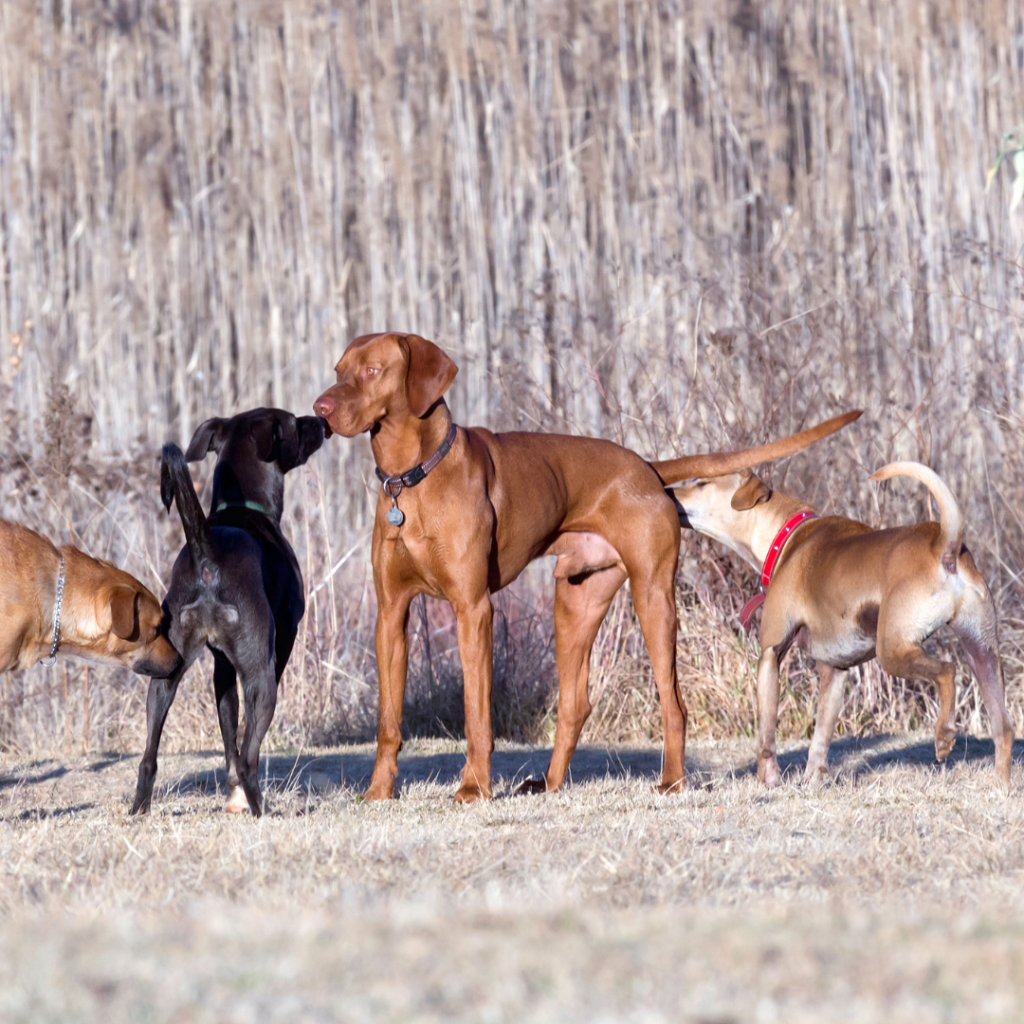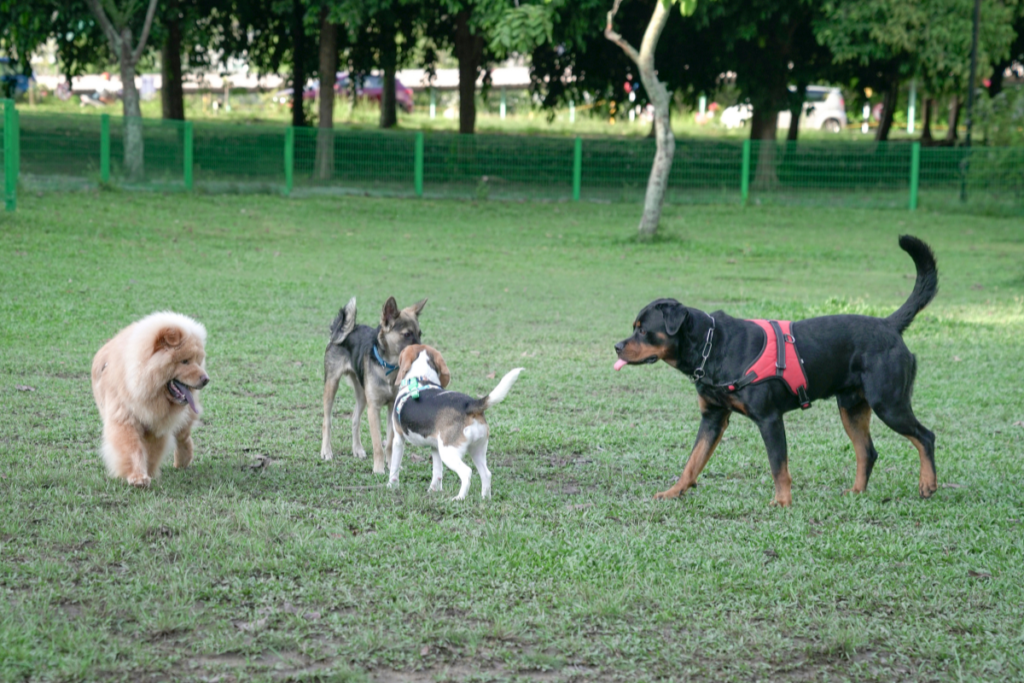
Perhaps you have just adopted an older dog, or your dog missed out on some socialisation and training when younger and suddenly they’re 1 year old, 25kgs and quite the handful when you take them out and about. It can be quite embarrassing when you just want to take your dog for a walk, and they end up barking or lunging at other dogs or people, or maybe even don’t want to go out at all. The world can be a scary place for dogs, with lots of other dogs, people, sounds and smells that can easily overwhelm some dogs. But starting this journey with a new dog can be incredibly rewarding and can teach you lots about your dog.
Why is my dog sacred of other dogs or situations?
Maybe your dog just hasn’t been exposed to certain environments, people, other dogs or other species. They may just not know how to act around them and we often see body language that indicates a dog is scared or fearful when they haven’t been in a particular situation before. Genetics also plays a part in behaviour.
If your dog is younger, they may be going through a fear period – this is when your dog is suddenly afraid of people, objects or places he used to be comfortable with. Some may become shy or timid of things and some may show more active “go away” behaviours such as growling or lunging. Dogs go through many different fear periods throughout their early lives. Some dogs can sail through these periods with no problems, others may develop unexpected fears. These periods will depend on the individual but in older dogs we can see them between 12 and 18 months, with some dogs even as late as 2 years.
It’s also possible your dog has had a negative experience with something or someone which caused them to become fearful or easily overwhelmed when faced with a similar situation.
Dog tolerance
A dog’s tolerance towards other dogs tends to change over their lifetime. While it’s common for puppies and young dogs to like all dogs, it’s normal for dogs to become less tolerant of other dogs as they get older and have a much smaller circle of friends, which is perfectly OK!
What about dog parks?
Dog parks can be great places to take your dog for a run around with other dogs, or perhaps toss a toy in a space bigger than your yard, however, some dogs just aren’t suited to dog parks. If you find your dog interacting poorly with other dogs, perhaps being bullied or even being the bully, it’s best to take them out of the park and find some other outlets.

What about dog training classes?
A good positive dog training class for adult dogs can be a great place to start learning how you and your dog can be a great team. They should focus on relationship and confidence building plus include real life situations and coaching. It’s not about ‘obedience’! Build the relationship first, and the obedience will fall into place naturally.
However, some dogs are not suited to a group class. If your dog is easily stressed, overwhelmed, or becomes extremely excited when seeing other dogs or people, it may not be the best environment to learn in. You become stressed, your dog is stressed, and no one learns well in that scenario. We often recommend working one on one with a qualified trainer first, and then working your way up to joining a group class when your dog is ready.
Training tips
- Connect with a qualified dog trainer for help. Find one in your area here.
- Take your time and work at your dog’s pace
- Set realistic expectations
- Give enough space and distance from anything that may trigger your dog (e.g., other dogs or crowded places)
- Avoid dog parks and off leash/busy areas until you have done some relationship building and groundwork in your training
- At minimum teach your dog their name and how to focus on you, to respond to basic cues such as sit and wait, plus a recall at home first
- Learn to read canine body language and subtle indicators of fear such as showing the whites of the eyes, lip licking/tongue flicking, head turning etc. Refer to Pawsitive Connections Canine Body Language Guide for a cues to look for.
- If you find your adult dog becoming scared/fearful or perhaps over the top excited such as pulling and lunging on the lead, give them some space.
- It’s helpful to teach your dog some easy decompression skills such as finding treats on the ground if they are a bit stressed.
You may not have a dog who likes or is accepting of every situation, person, or dog and that is perfectly OK! When it comes to socialising an adult dog, work within their ability and go at their pace.
References
London, K and McConnell, P (2011) Love Has No Age Limit – Welcoming an Adopted Dog Into Your
Home, McConnell Publishing Limited, Dogwise WA
